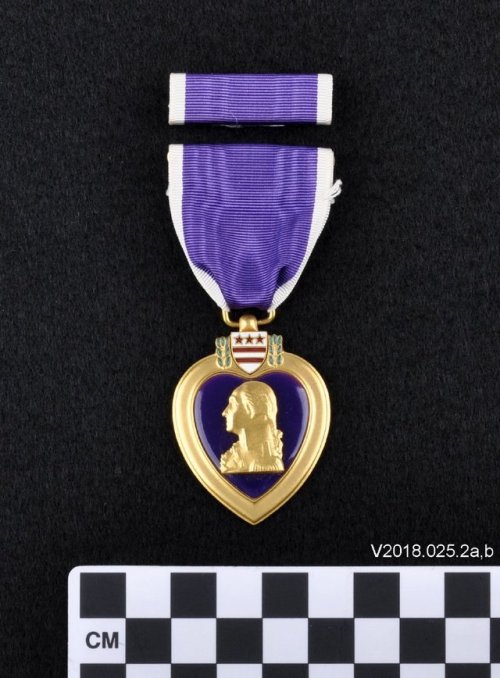#wisconsin veterans museum
This Week in History:
January 6, 1838 - Samuel Morse demonstrates telegraph
“On this day in 1838, Samuel Morse’s telegraph system is demonstrated for the first time at the Speedwell Iron Works in Morristown, New Jersey. The telegraph, a device which used electric impulses to transmit encoded messages over a wire, would eventually revolutionize long-distance communication, reaching the height of its popularity in the 1920s and 1930s.
Samuel Finley Breese Morse was born April 27, 1791, in Charlestown, Massachusetts. He attended Yale University, where he was interested in art, as well as electricity, still in its infancy at the time. After college, Morse became a painter. In 1832, while sailing home from Europe, he heard about the newly discovered electromagnet and came up with an idea for an electric telegraph. He had no idea that other inventors were already at work on the concept.
Morse spent the next several years developing a prototype and took on two partners, Leonard Gale and Alfred Vail, to help him. In 1838, he demonstrated his invention using Morse code, in which dots and dashes represented letters and numbers. In 1843, Morse finally convinced a skeptical Congress to fund the construction of the first telegraph line in the United States, from Washington, D.C., to Baltimore. In May 1844, Morse sent the first official telegram over the line, with the message: “What hath God wrought!”
Over the next few years, private companies, using Morse’s patent, set up telegraph lines around the Northeast. In 1851, the New York and Mississippi Valley Printing Telegraph Company was founded; it would later change its name to Western Union. In 1861, Western Union finished the first transcontinental line across the United States. Five years later, the first successful permanent line across the Atlantic Ocean was constructed and by the end of the century telegraph systems were in place in Africa, Asia and Australia.
Because telegraph companies typically charged by the word, telegrams became known for their succinct prose–whether they contained happy or sad news. The word “stop,” which was free, was used in place of a period, for which there was a charge. In 1933, Western Union introduced singing telegrams. During World War II, Americans came to dread the sight of Western Union couriers because the military used telegrams to inform families about soldiers’ deaths.
Over the course of the 20th century, telegraph messages were largely replaced by cheap long-distance phone service, faxes and email. Western Union delivered its final telegram in January 2006.
Samuel Morse died wealthy and famous in New York City on April 2, 1872, at age 80.”
This week in History:
January 5, 1933 - Construction on Golden Gate Bridge begins
January 6, 1912 - New Mexico joins Union
January 7, 1927 - Harlem Globetrotters play their first game
January 8, 1946 - Elvis Presley receives first guitar
January 9, 1768 - First modern circus is staged
January 10, 1901 - Gusher signals start of U.S. oil industry
January 11, 1908 - Roosevelt makes Grand Canyon a national monument
This carte-de-visite of Samuel Morse and his telegraph can be found in the online collection of the Wisconsin Veterans Museum.
Post link
August 7, 1782 - Washington creates the Purple Heart
“On this day in 1782, in Newburgh, New York, General George Washington, the commander in chief of the Continental Army, creates the “Badge for Military Merit,” a decoration consisting of a purple, heart-shaped piece of silk, edged with a narrow binding of silver, with the word Merit stitched across the face in silver. The badge was to be presented to soldiers for “any singularly meritorious action” and permitted its wearer to pass guards and sentinels without challenge. The honoree’s name and regiment were also to be inscribed in a “Book of Merit.”
Washington’s “Purple Heart” was awarded to only three known soldiers during the Revolutionary War: Elijah Churchill, William Brown and Daniel Bissell, Jr. The “Book of Merit” was lost, and the decoration was largely forgotten until 1927, when General Charles P. Summerall, the U.S. Army chief of staff, sent an unsuccessful draft bill to Congress to “revive the Badge of Military Merit.” In 1931, Summerall’s successor, General Douglas MacArthur, took up the cause, hoping to reinstate the medal in time for the bicentennial of George Washington’s birth. On February 22, 1932, Washington’s 200th birthday, the U.S. War Department announced the creation of the “Order of the Purple Heart.”
In addition to aspects of Washington’s original design, the new Purple Heart also displays a bust of Washington and his coat of arms. The Order of the Purple Heart, the oldest American military decoration for military merit, is awarded to members of the U.S. armed forces who have been killed or wounded in action against an enemy. It is also awarded to soldiers who have suffered maltreatment as prisoners of war.”
This week in History:
August 4, 1944 - Anne Frank captured
August 5, 1858 - First transatlantic telegraph cable completed
August 6, 1945 - American bomber drops atomic bomb on Hiroshima
August 7, 1912 - Teddy Roosevelt nominated as Bull Moose candidate
August 8, 1863 - General Robert E. Lee offers resignation
August 9, 1877 - Nez Perce fight in the Battle of Big Hole
August 10, 1846 - Smithsonian Institution created
ThisPurple Heart, awarded to James C. Nelson after his service in World War I, can be found in the online collection of the Wisconsin Veterans Museum.
Post link


